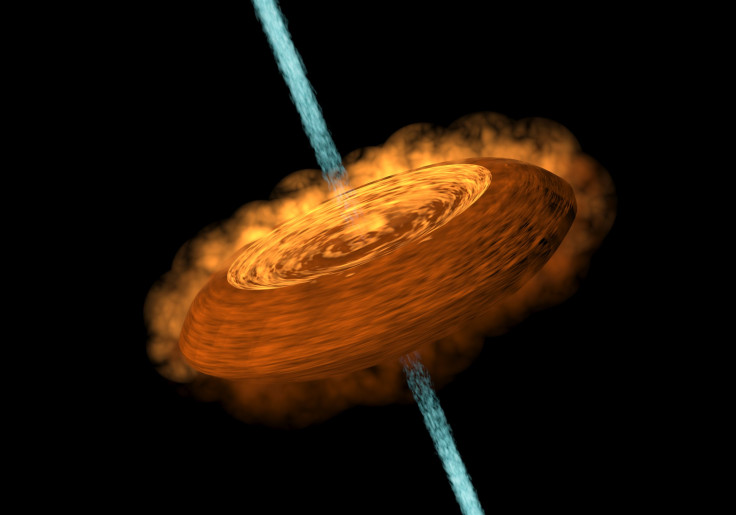How Do Planets Form? 'Hamburger'-Shaped Accretion Disk Around Nearby Young Star Could Provide Key Insights

Nearly 1,300 light-years from Earth lies a young star that’s feeding on gigantic “hamburger”-shaped disk of dust and debris. The accretion disk surrounding this protostar was revealed in unprecedented detail by astronomers using the Atacama Large Millimeter/ submillimeter Array (ALMA) in Chile.
The observations, detailed in a new study published in the journal Science Advances, not only provide a detailed look at how accretion disks around young stars form, but also reveal the vertical structure of the disk for the first time in the earliest phase of star formation.
“It is so amazing to see such a detailed structure of a very young accretion disk,” study lead author Chin-Fei Lee, a researcher at the Academia Sinica Institute of Astronomy and Astrophysics in Taiwan, said in a statement. “For many years, astronomers have been searching for accretion disks in the earliest phase of star formation, in order to determine their structure, how they are formed, and how the accretion process takes place. Now using the ALMA with its full power of resolution, we not only detect an accretion disk but also resolve it, especially its vertical structure, in great detail.”
This particular star system, named HH 212, contains, at its center, a star that is just 40,000 years old. Scientists believe that it accretes material efficiently due to its powerful bipolar jet. The dark zone in the center of its circumstellar disk, which gives it its distinctive appearance, indicates that the disk is flared and that its midplane is colder than the regions above and below it.

Over the years, astronomers have discovered and confirmed the existence of nearly 3,500 exoplanets, but there is one question that they still haven’t been able to answer satisfactorily — how exactly do planets form? Specifically, how do dust particles just a few micrometers in size aggregate to form gigantic planets thousands of miles in diameter?
The new observations could shed light on this scarcely understood stage of planet formation, especially on the process of grain growth.
“In the earliest phase of star formation, there are theoretical difficulties in producing such a disk, because magnetic fields can slow down the rotation of collapsing material, preventing such a disk from forming around a very young protostar,” study co-author Zhi-Yun Li from the University of Virginia said in the statement. “This new finding implies that the retarding effect of magnetic fields in disk formation may not be as efficient as we thought before.”
© Copyright IBTimes 2024. All rights reserved.






















